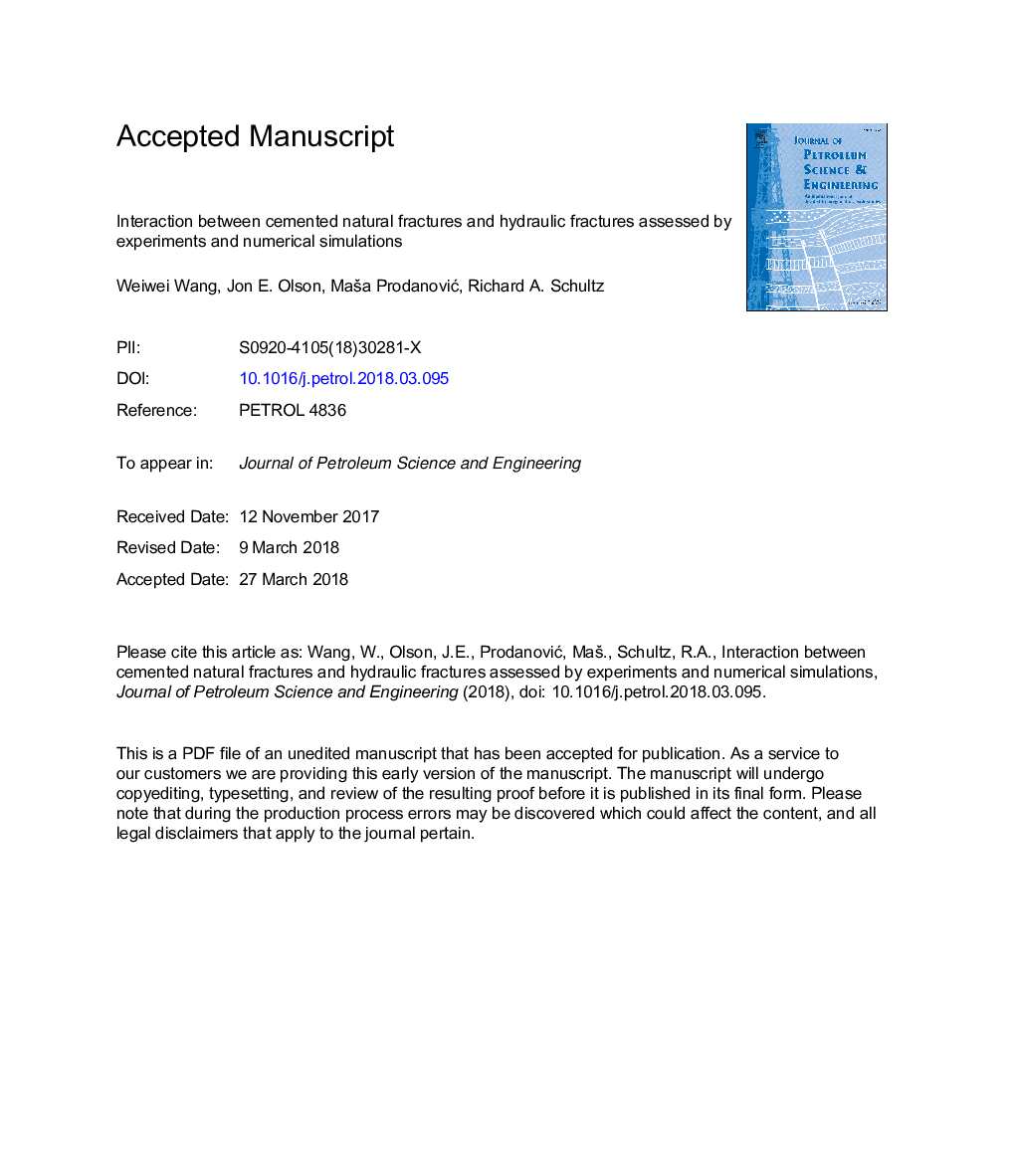| کد مقاله | کد نشریه | سال انتشار | مقاله انگلیسی | نسخه تمام متن |
|---|---|---|---|---|
| 8124823 | 1522774 | 2018 | 27 صفحه PDF | دانلود رایگان |
عنوان انگلیسی مقاله ISI
Interaction between cemented natural fractures and hydraulic fractures assessed by experiments and numerical simulations
ترجمه فارسی عنوان
تعامل بین شکستگی های طبیعی سیمان و شکستگی های هیدرولیکی توسط آزمایش ها و شبیه سازی های عددی بررسی شده است
دانلود مقاله + سفارش ترجمه
دانلود مقاله ISI انگلیسی
رایگان برای ایرانیان
موضوعات مرتبط
مهندسی و علوم پایه
علوم زمین و سیارات
زمین شناسی اقتصادی
چکیده انگلیسی
Microseismic events suggest that a complicated fracture network develops during hydraulic fracturing treatment in many naturally fractured unconventional reservoirs. One reason for the complexity is the deformation along weak planes such as faults and cemented natural fractures. The interaction of cemented natural fractures with hydraulic fractures generated as part of reservoir stimulation may impede or terminate hydraulic fracture propagation, which depends on several factors such as interfacial bond strength between the cemented natural fractures and the reservoir rock. Most previous studies treat natural fractures as interfaces without considering their thickness. In this study, the semiâcircular bend (SCB) tests for specimens with heterogeneity are used to study the fractureâfracture interactions, because the tensile fracture in the SCB test is analogous to the induced hydraulic fracture. With simple experimental setup and good repeatability, the SCB test results provide insights into real hydraulic fracture propagation behavior in naturally fractured reservoirs. We analyze the effects of natural fracture thickness and rockâcement interfacial bond strength, which are not commonly considered. Results show that hydraulic fracture crossing/diverting behavior depends on the approach angle, the rockâcement interfacial bond strength, and the thickness of natural fracture. Results also imply that as hydraulic fractures approach cemented natural fractures, the hydraulic fracture nearâtip stress state is influenced by the tensile and shear strength of the rockâcement interface. In the SCB test, the sample geometry induces shearing along the cemented natural fractureârock interface, analogous to a frictionally slipping interface in the subsurface. Depending on the frictional strength and the approach angle, the interface may crack apart, and attract a propagating fracture.
ناشر
Database: Elsevier - ScienceDirect (ساینس دایرکت)
Journal: Journal of Petroleum Science and Engineering - Volume 167, August 2018, Pages 506-516
Journal: Journal of Petroleum Science and Engineering - Volume 167, August 2018, Pages 506-516
نویسندگان
Weiwei Wang, Jon E. Olson, MaÅ¡a ProdanoviÄ, Richard A. Schultz,
